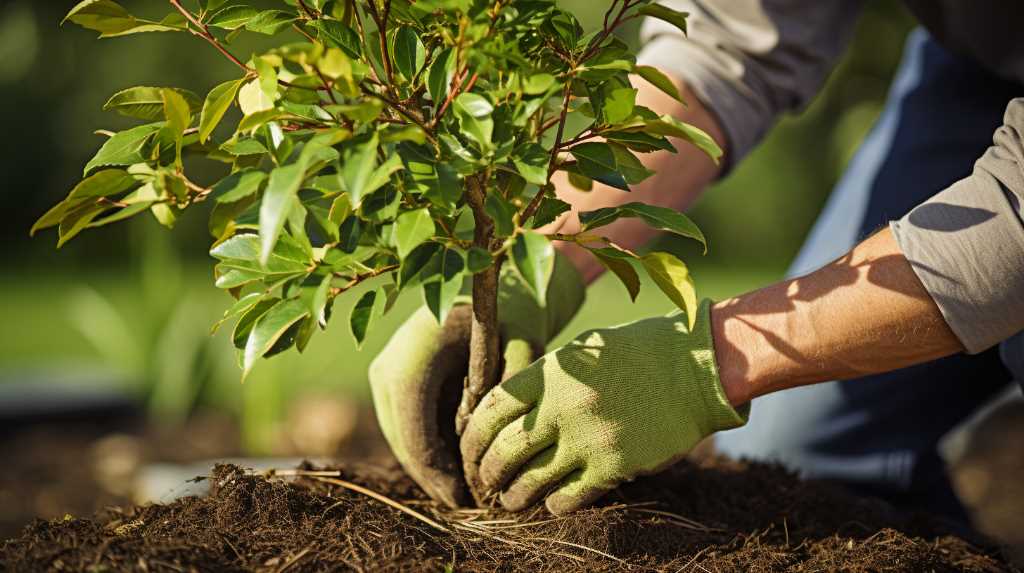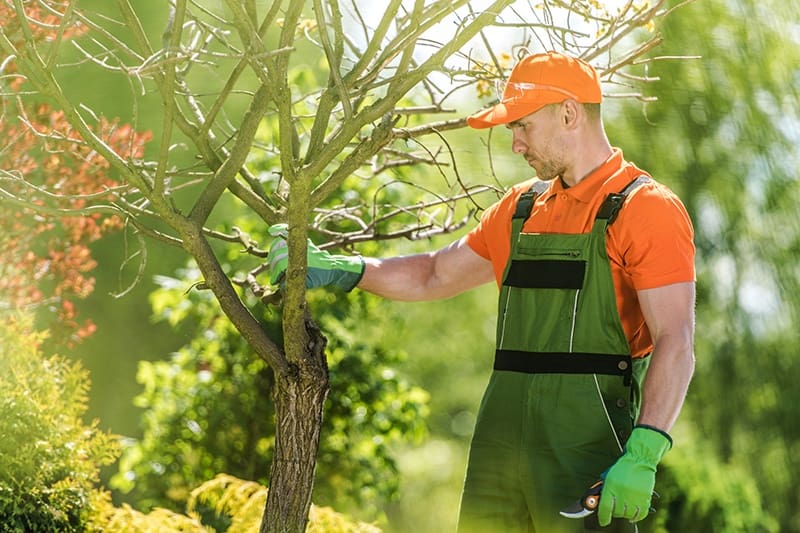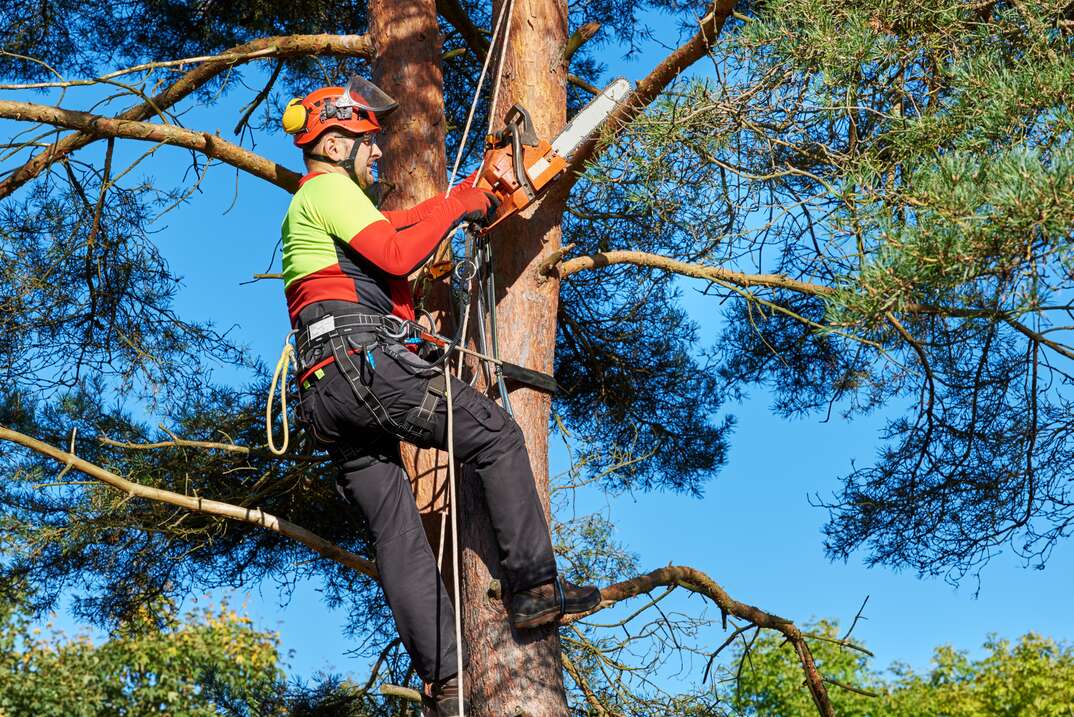Tree Trimming
7 Crucial Tips for Tree Care Post-Planting


As a tree lover, I understand the importance of proper care after planting. That’s why I want to share with you 7 crucial tips that will help your trees thrive.
From preparing the soil to monitoring their health, these expert techniques will ensure your trees feel loved and belong in your garden.
So, let’s dive into the world of post-planting tree care and discover how to create a nurturing environment for your leafy companions.
Soil Preparation
Soil preparation is essential for ensuring the healthy growth and development of newly planted trees. Before planting a tree, it’s important to assess the soil conditions and make any necessary amendments.
Start by loosening the soil in the planting area using a garden fork or tiller. This will improve the soil’s texture and allow for better root penetration. Additionally, adding organic matter such as compost or aged manure can enhance the soil’s fertility and moisture-holding capacity.
It’s also crucial to check the pH level of the soil and adjust it if needed. Proper soil preparation creates a favorable environment for the tree’s roots to establish and absorb nutrients efficiently.


With a well-prepared soil, the subsequent step of watering techniques can be executed effectively to support the tree’s growth and development.
Watering Techniques
After preparing the soil, I then turn my attention to the crucial aspect of watering techniques for newly planted trees. Proper watering is essential for the establishment and growth of young trees. I recommend watering deeply and infrequently to encourage the growth of deep, strong roots. This can be achieved by applying water slowly and evenly to the root zone, allowing it to penetrate the soil. It’s important to avoid overwatering, as this can lead to root rot and other diseases. Regular monitoring of soil moisture is crucial, and adjustments should be made based on weather conditions. By providing the right amount of water, you’ll ensure the health and vitality of your newly planted trees.
Now that we’ve covered the importance of proper watering techniques, let’s move on to the next topic: mulching dos and don’ts.
Mulching Dos and Don’ts
When it comes to mulching around trees, there are a few key points to keep in mind.
First, the depth of the mulch is crucial – it should be around 2-4 inches deep but never piled up against the tree trunk.
Proper mulching techniques include creating a donut-shaped ring around the base of the tree and leaving a gap near the trunk.
Mulch Depth and Benefits
To ensure optimal tree health, I recommend maintaining an appropriate mulch depth around the base of the tree. Mulching provides numerous benefits that promote the overall well-being of the tree. Here are some important points to consider when it comes to mulch depth and its benefits:


- Depth matters: Apply a layer of mulch around 2-4 inches deep. This provides enough insulation, moisture retention, and weed suppression without suffocating the roots.
- Root protection: Proper mulching helps protect the tree’s delicate root system from extreme temperatures, minimizing stress and promoting healthy growth.
- Moisture retention: Mulch acts as a natural sponge, retaining moisture and preventing excessive evaporation. This helps keep the soil consistently moist, which is vital for the tree’s hydration.
- Weed control: Mulching helps suppress weed growth by blocking sunlight and preventing weed seeds from germinating, reducing competition for nutrients and water.
Proper Mulching Techniques
Continuing the discussion on mulch depth and its benefits, I frequently practice proper mulching techniques to ensure the health and vitality of my trees.
When it comes to mulching, there are some important dos and don’ts to keep in mind.
Firstly, do apply a layer of mulch around the base of the tree, extending it out to the drip line. This will help retain moisture, regulate soil temperature, and suppress weed growth.
However, don’t pile the mulch against the trunk of the tree as it can lead to moisture buildup and encourage rot.
It’s also important to regularly check the depth of the mulch and maintain it at around 2-4 inches.
Common Mulching Mistakes
Now that we’ve covered proper mulching techniques, let’s address some common mulching mistakes and the dos and don’ts to keep in mind for optimal tree care post-planting.
- Overmulching: Applying too much mulch can suffocate the roots and create a moist environment ideal for pests and diseases. Stick to a 2-4 inch layer and avoid piling it against the trunk.
- Volcano Mulching: This occurs when mulch is piled up against the tree trunk, resembling a volcano shape. It can lead to rot, disease, and even death. Always keep the mulch several inches away from the base of the tree.
- Using the Wrong Mulch: Some mulch types, like fresh wood chips or bark, can rob the soil of nitrogen as they decompose. Opt for aged mulch or compost to avoid nutrient deficiencies.
- Neglecting to Refresh Mulch: Mulch breaks down over time and loses its effectiveness. Replenish the mulch annually to maintain moisture retention and weed control.
Pruning Guidelines
My preferred method for pruning a newly planted tree is to start with removing any dead or damaged branches. This helps ensure that the tree can allocate its resources to healthy growth.


It’s important to make clean cuts just outside the branch collar, avoiding leaving stubs or cutting too close to the trunk. Pruning should be done during dormancy to minimize stress on the tree.
It’s also crucial to maintain a central leader and remove any competing branches that may hinder its growth. Regular pruning promotes strong branch structure and improves air circulation, reducing the risk of disease and pests.
Fertilizer Application
To promote healthy growth, it’s important to apply fertilizer to a newly planted tree. Here are some crucial tips for fertilizer application:
- Choose the right fertilizer: Look for a slow-release, balanced fertilizer with a ratio of nitrogen, phosphorus, and potassium (NPK). This will provide the necessary nutrients for optimal tree growth.
- Follow the instructions: Read and follow the instructions on the fertilizer package carefully. Applying too much or too little can harm the tree’s health.
- Apply at the right time: Fertilize in early spring or late fall, when the tree is actively growing. Avoid fertilizing during hot summer months or when the ground is frozen.
- Spread evenly and water thoroughly: Distribute the fertilizer evenly around the tree’s drip line, avoiding direct contact with the trunk. After application, water the area thoroughly to help nutrients penetrate the soil.
Pest and Disease Management
After ensuring proper fertilizer application, the next crucial aspect of tree care post-planting is managing pests and diseases. Pests and diseases can pose serious threats to the health and longevity of your trees, so it’s important to be proactive in preventing and treating them.
Regularly inspect your trees for signs of infestation or disease, such as yellowing leaves, wilting, or the presence of pests. If you notice any issues, promptly take action to address them. This may involve using organic or chemical treatments, pruning affected branches, or even removing severely infected trees. By consistently monitoring and managing pests and diseases, you can help protect your trees and ensure their continued well-being.
Now that we’ve discussed pest and disease management, let’s move on to the next important aspect of tree care: monitoring tree health.
Monitoring Tree Health
After addressing pest and disease management, it’s vital to monitor the health of your trees to ensure their well-being and longevity. Here are four important steps to help you effectively monitor your trees:


- Regular visual inspection: Take the time to visually examine your trees, looking for any signs of stress, such as wilting leaves, discoloration, or unusual growth patterns. Early detection of issues can prevent further damage.
- Soil moisture monitoring: Proper soil moisture is crucial for tree health. Use a soil moisture meter to check the moisture level around the tree’s root zone. Adjust watering accordingly to avoid over or under-watering.
- Pruning and trimming: Regular pruning helps maintain the tree’s shape and removes dead or diseased branches. Trim your trees annually to promote healthy growth and prevent potential hazards.
- Professional arborist consultation: If you’re unsure about your tree’s health or need expert advice, consult a professional arborist. They can assess your trees, provide guidance, and recommend any necessary treatments or care.


Hello there! I’m Logan Foster, the green-thumbed social media marketer behind the vibrant world of 1800TreeGuy.com. With roots firmly planted in arboriculture, I’ve branched out to help clients cultivate their dream outdoor spaces, one leafy canopy at a time. My knack for nurturing nature is more than a profession—it’s a way of life.
When I’m not talking trees and teaching the art of arboreal care, you can find me cheering on the Bulldogs—my alma mater’s pride and my forever team. My environmental studies there didn’t just teach me about ecosystems; they instilled a lifelong passion for protecting our planet.
Off the clock, I’m an adventurer at heart. Whether it’s trekking the Appalachian trails, pedaling down a mountain path, or crafting guides to share the wonders of the wild, I’m happiest with soil under my nails and the sun on my face. And let’s not forget Yoda, my pug sidekick. He may not have mastered the art of stillness, but his joyful grins are my daily dose of happiness.
I’m all about making connections—between people and the great outdoors and between my clients and their ideal landscape visions. My approach is personal; every tree has a story, and every garden reflects its caretaker.
If you want to green your scene or share in my outdoor escapades, give me a shout on Instagram or Facebook. Let’s cultivate a conversation and grow a community rooted in a love for the lush life.








